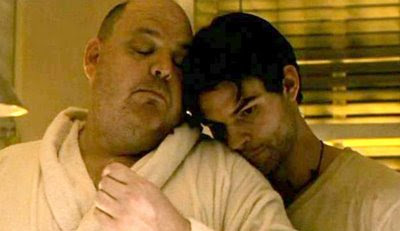A Parade of Horrors in 3-D
Ever since James Cameron’s rampant success with Avatar in 3-D, horror films have been falling in line to add a three dimensional aspect to their scares. From My Bloody Valentine and The Final Destination, to Saw 3D and Resident Evil: Afterlife the production of horror films in 3-D has gone viral in the hopes of upping sales in a slumping genre. But far from accentuating these films, 3-D has become a tired tactic that puts the focus on spectacle rather on the merits of the film itself.
So how does 3-D work? For all its hype, it is an amazingly simple process. Because your eyes are spaced about 2 inches apart, they each see at slightly different angles. Your brain collects this data and compiles it to form one image. 3-D riffs off this natural phenomenon by projecting the same scene from two different angles in two different colors.
Now is when those cool glasses come in handy. Each lens has a color filter so that each image only enters one eye. Your brain whips the two pictures back together and instantly you are in the path of a flying axe!
Not surprisingly, horror has had an illustrious career in the 3-D film business, stretching as far back to the 1950s, the golden age of 3-dimensional film releases. Universal’s House of Wax (1953), starring Vincent Price, was released in three dimensions and stereophonic sound. Other films in this vein include It Came from Outer Space (1953) and the so-bad-its-good camp fest Robot Monster (1953).
These films and others where part of the 3-D boom in the 1950s that soon declined due to the cumbersome development process that required the projection of two sets of film prints. But 3-D wasn’t dead yet, and it rose again in single strip format with horror movies like Andy Warhol’s Flesh for Frankenstein (1973) Amityville 3D (1983)—the third installment of the series—and Friday the 13th Part III (1982)
So the resurrection of three dimensions in horror today should come as no surprise to modern viewers, but the current 3-D bloat in the horror industry can be read as a desperate sideshow attempt to herd audiences into theaters.
This is not to say that all uses of 3-D are horrible injustices to the films they portray. When used properly, 3-D can do much to accentuate the story and cinematography of a film. But notice that I refer to 3-D more as an appetizer than the main course. Many of the contemporary films mentioned here have forgotten that what makes a good film is not the “effect,” but the story. In going for the 3-D gross out or scare, studios try to distract the audience from the fact that the story, character development and plot are not all there.
Audiences have definitely taken notice and the proof is in the box office receipts. Saw 3D grossed 24 million in its opening weekend, a meager profit compared to the 17 million it took to make. The same is true of Resident Evil: Afterlife’s dismal returns. The film barely broke even with a $60,128,566 total take after spending an estimated $60,000,000 to make the film.
3-D can be a powerful tool to horror filmmakers and cinematographers who recognize that it shouldn’t be used for its own sake. Until then, I’ll take my horror movies in good old fashioned two dimensions please.





Comments
Post a Comment